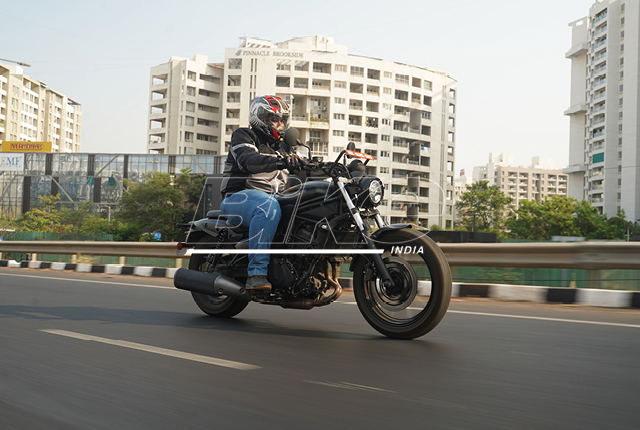
The Kawasaki Eliminator has little competition, for it has always belonged to its own niche. We do not see other manufacturers bunging sport bike engines into cruiser chassis, do we?
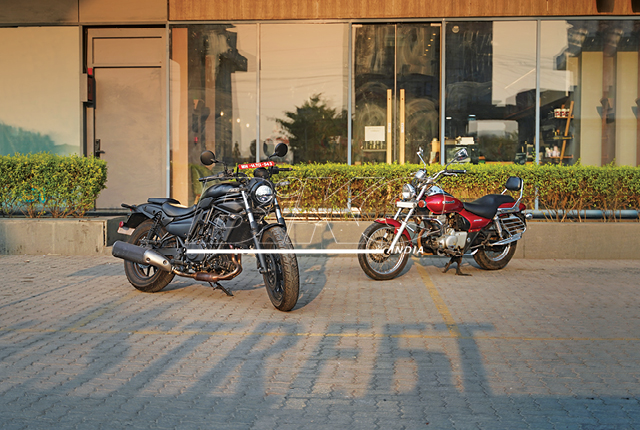
Story: Sayantan De
Photography: Apurva Ambep
Kawasaki entered the Indian market back in 1986 with the two-stroke KB100. Their first four-stroke offering for the enthusiast was the Eliminator 175 in 2001. After disappearing globally for quite some time, the Eliminator nomenclature is back around the world and in India, in the form of the 2024 Kawasaki Eliminator.
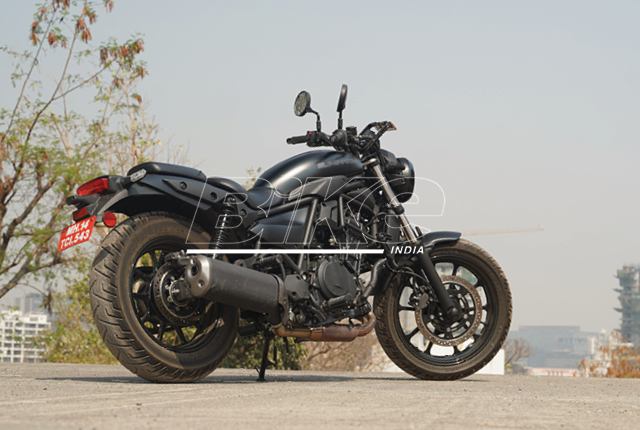
Interestingly, it was in 1985 that the name “Eliminator” first appeared in the world, powered by a ZX900 Ninja engine. The new Eliminator continues this tradition with an engine shared with the Ninja 500. So, how does it feel to ride the new Eliminator?
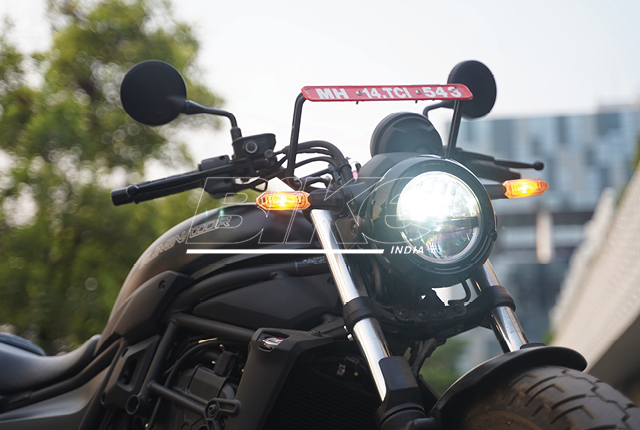
A lot of water has flown down the River Toga during this time and the global motorcycle market has changed drastically—both the sport bike and the cruiser are a lot less popular than they used to be, having been usurped by naked bikes, retro roadsters, scramblers, and, of course, the SUV of the two-wheeled world: the Adventure motorcycle. How does combining a sport bike and a cruiser work out today? Very well, in fact.
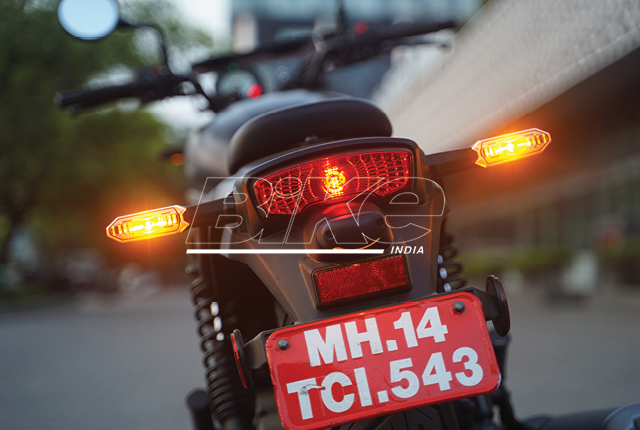
The Eliminator is devoid of the chrome that is ubiquitous on a cruiser, instead opting for a “murdered out” aesthetic via a black trellis frame, black paint, black engine casings, and even a black headlight nacelle with a black surround (while there are other body colours available overseas, chrome parts are not part of those). The motorcycle is properly handsome; the combination of an 18-inch front and 16-inch rear wheel lends it a low-slung, drag bike-like stance which is a subtle nod to the OG Eliminator 900. But the huge radiator gives away that it is not your average air-cooled cruiser. The front number-plate, mandatory in India, has caused Kawasaki to adopt a solution which ruins the lines of the bike a bit.
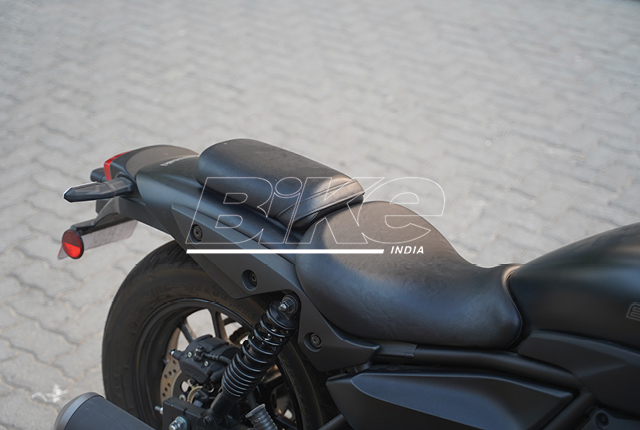
Swing a leg over, settle comfortably in the low seat, and hold the handlebar and up to this point it is a cruiser. Then you try to find the feet-forward controls and you realise that the foot-pegs are mounted midship, like a roadster. The position is comfortable yet sporty; sticking to the brief of “performance cruiser” so far. However, the pillion perch is just a rectangular piece of foam masquerading as a seat—you don’t even need to sit on it to know it is going to be something you will remember for a long time after getting off the bike (and not for the best reasons). It is strictly for short distances.
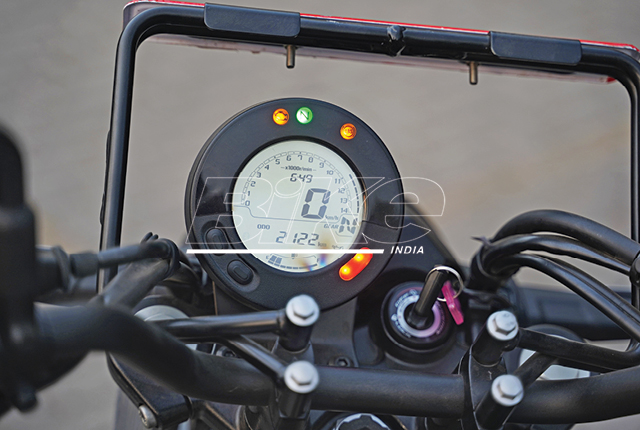
The sparse instrumentation is a bit of a let-down, though, and it would have served Kawasaki well to opt for an analogue meter with a small digital screen. I feel it would have suited the character of the motorcycle better than the dated-looking LCD it comes equipped with. Most people would point out that, at its price point, the Eliminator should have TFT instrumentation. I feel that it would work only if it is designed with retro-style graphics to match the vibe of the motorcycle.
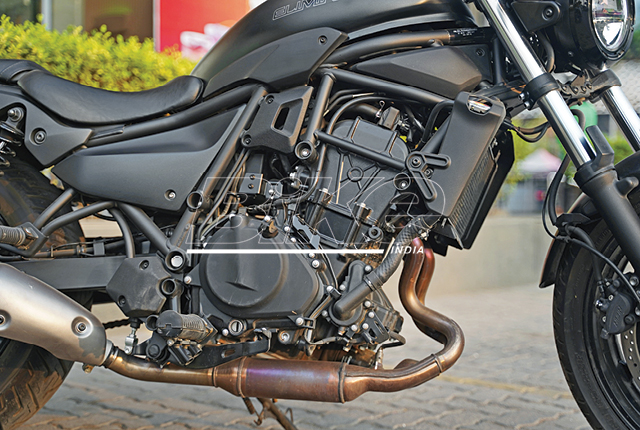
The engine is identical to the one found on the Ninja 500, displacing 451 cc over two cylinders and revving to 11,000 rpm thanks to the sport bike origin lending it an oversquare architecture (bore and stroke are 70.0 millimetres and 58.6 mm respectively). At that rpm, it delivers 45 hp and the torque peak of 42.6 Nm is also a rather high 6,000 rpm. But the numbers do not tell the whole story, for the Eliminator has a great torque spread, so puttering about town is easy to do even in sixth gear at a speed as low as 40 km/h. Opening the throttle results in a smooth surge and I would like to take this opportunity to thank the engineers for making me double-check the bike did have ride-by-wire, as the linearity made me feel as if I was riding a carburetted bike. The engine is eager to rev, but, after 5,000 rpm, vibration becomes noticeable in the foot-pegs and some in the seat, too, so the best way to ride it is to surf that wave of torque. It can sprint if you want it to, but that’s not its forte—it feels strongest at low- and mid-rev ranges. The clutch is a slip-and-assist one and has a seriously light pull, definitely one of the more comfortable clutches in the segment.
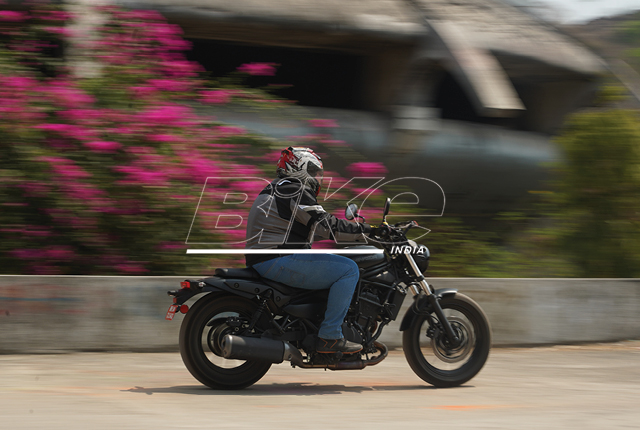
The Eliminator is both stable and agile—it is far more willing to dive into corners than the looks suggest. Once tipped in, it holds the line steadily, inspiring confidence in the newbie and the pro alike. Thanks to the relatively light kerb weight of 176 kilograms, physically picking up the bike and leaning it the other way through a set of S-curves require very little effort. The suspension set-up is basic, consisting of a 41-mm non-adjustable telescopic fork and preload-adjustable twin rear shock-absorbers. In spite of this handicap, the Eliminator rides reasonably well, though, like most cruisers, it is a little stiff at the rear (dialling down the preload will help if you’re a featherweight). The braking system—consisting of a 310-mm front disc and a 240–mm rear one—offers excellent bite and modulation. The ABS can be a bit too eager occasionally, but on most occasions it manages to keep its nose out of your business.
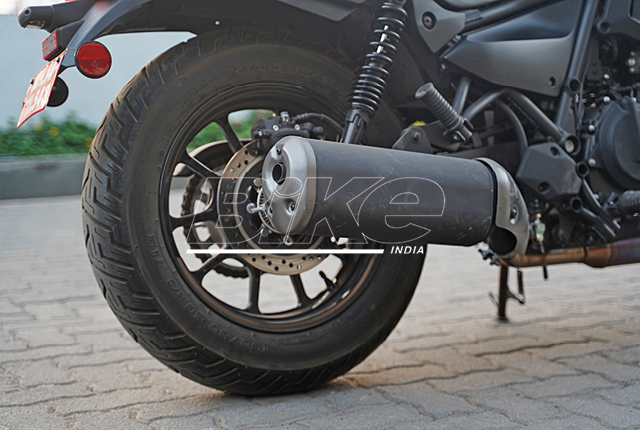
Unlike its namesake from more than two decades ago, the Eliminator comes to our shores as a completely built-up unit (CBU), which naturally makes it not the most affordable bike at Rs 5.62 lakh (ex-showroom). However, it is remarkably friendly—a result of light weight and linear power—while offering enough performance and handling chops to keep the more experienced rider entertained.


Leave a Reply